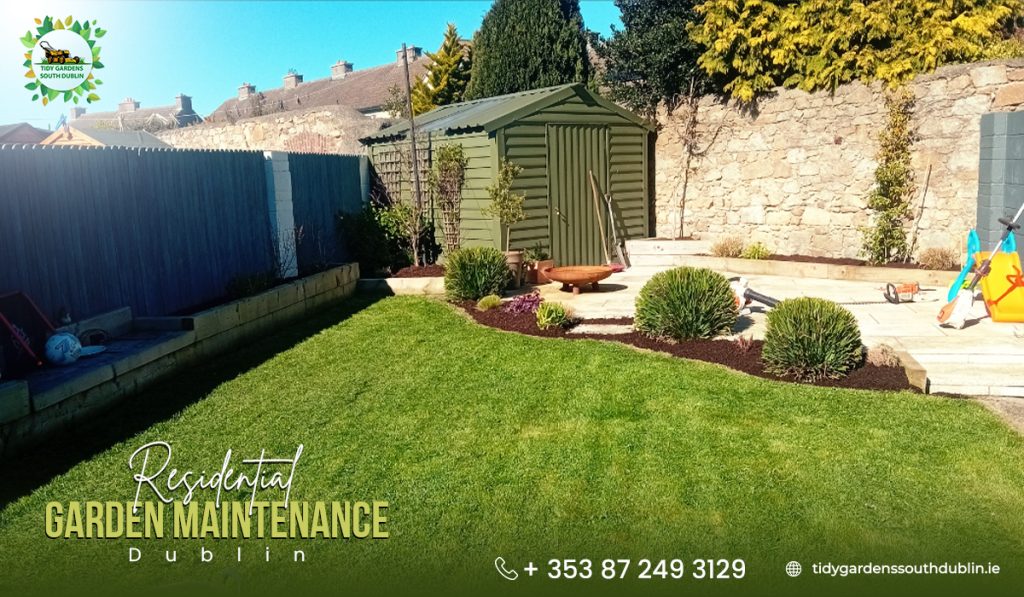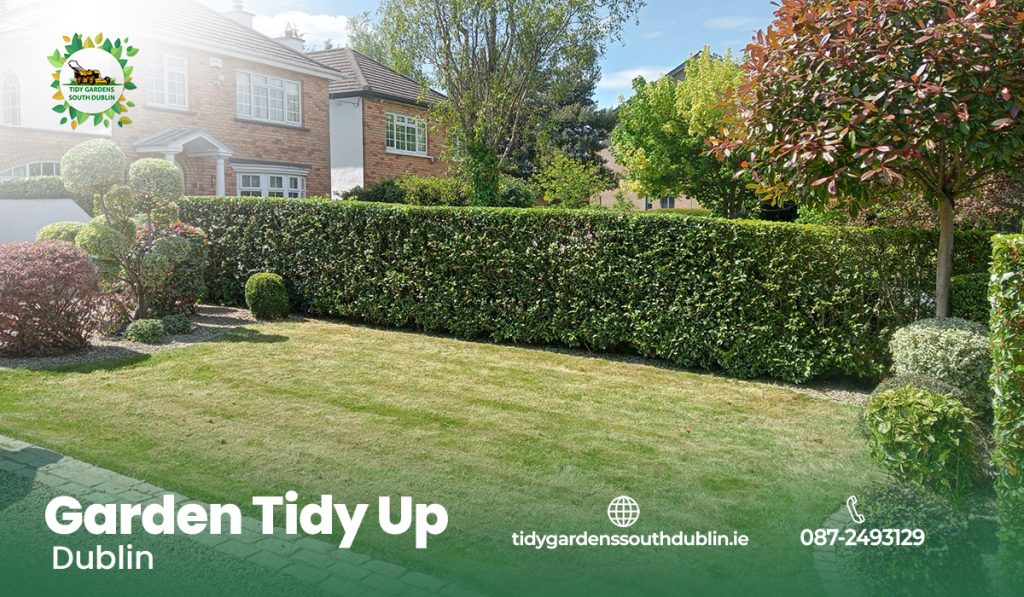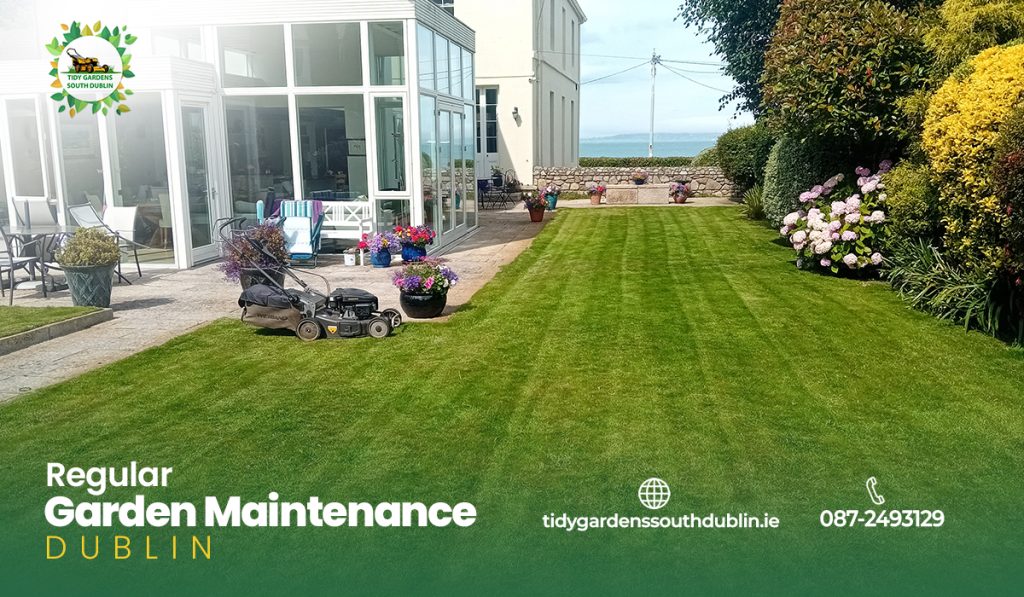A well-maintained garden can transform your home into a peaceful oasis, providing a serene outdoor space to relax, entertain, or simply enjoy nature’s beauty. However, maintaining a garden can be a demanding task. From mowing the lawn to pruning shrubs, residential garden maintenance in Dublin requires ongoing care and attention to ensure that your garden remains healthy, vibrant, and inviting. In this blog, we will explore essential tips for maintaining your garden and how regular upkeep can help your garden thrive year-round.

Why Residential Garden Maintenance in Dublin is Important
The importance of residential garden maintenance goes beyond just aesthetic appeal. Regular garden care has several benefits, including:
- Increased Property Value: A well-maintained garden enhances the overall curb appeal of your home, boosting its value. If you’re planning to sell, a beautiful garden can be a major selling point.
- Improved Health of Plants: Ongoing maintenance helps prevent pests, diseases, and overgrowth, ensuring your plants remain healthy and vibrant. Regular care promotes stronger roots, better flowers, and more fruit.
- Safety and Comfort: Overgrown hedges, trees, or weeds can become safety hazards. Proper garden maintenance ensures that there are no hidden obstacles or dangerous plants around your property, creating a safe environment for family and guests.
- Environmental Benefits: A thriving garden contributes to the environment by promoting biodiversity, providing habitats for pollinators like bees and butterflies, and helping to reduce air pollution.
Key Elements of Residential Garden Maintenance
A successful garden maintenance routine involves various tasks that need to be performed regularly throughout the year. Below are key elements of residential garden maintenance that will help keep your garden healthy and beautiful.
1. Lawn Care
The lawn is often the centerpiece of a residential garden. Maintaining a lush, green lawn requires regular mowing, watering, and fertilization.
- Mowing: Regular mowing helps maintain the aesthetic appeal of your lawn. Ensure that you mow your lawn to the appropriate height for the type of grass you have. Mowing too short can damage the grass and lead to weed invasion.
- Watering: Lawns require consistent watering, especially during the hotter months. Be mindful of the watering schedule, and avoid over-watering, which can cause root rot. Watering early in the morning is the best time to prevent evaporation and help grass absorb water efficiently.
- Fertilizing: Use a slow-release fertilizer to nourish your lawn and promote healthy growth. Apply fertilizer in the spring or fall, depending on the type of grass you have.
2. Pruning and Trimming
Pruning and trimming are essential tasks for maintaining the health and shape of shrubs, trees, and flowering plants.
- Pruning: Pruning involves removing dead or damaged branches from trees and shrubs. This encourages new growth and improves the overall structure of the plant. It also helps prevent diseases from spreading.
- Trimming: Regular trimming of hedges, bushes, and flower beds keeps the garden looking neat and tidy. Remove any overgrown foliage to ensure plants don’t become too crowded, which can prevent proper airflow and sunlight penetration.
3. Weed Control
Weeds are a common nuisance in most gardens and can compete with your plants for nutrients, water, and sunlight. Preventing and controlling weeds is an essential part of residential garden maintenance.
- Mulching: Mulching helps suppress weed growth by blocking sunlight and preventing weed seeds from germinating. Use organic mulch like bark, leaves, or straw to add a natural look to your garden while controlling weeds.
- Manual Weeding: Regularly pull out weeds by hand or use a weed puller to remove them from the root. This prevents them from growing back.
- Herbicides: For severe weed infestations, herbicides can be used, but always opt for eco-friendly, non-toxic options to protect your plants and the environment.
4. Soil Health
Healthy soil is the foundation of any thriving garden. It provides nutrients and support for plants, helping them grow strong and healthy.
- Soil Testing: Conduct a soil test to determine the pH level and nutrient content of your soil. This helps you understand what type of amendments your soil may need to support plant growth.
- Composting: Adding compost to your soil is a great way to improve its fertility. Compost adds essential nutrients, promotes healthy microbial activity, and helps retain moisture.
- Aerating: Over time, the soil can become compacted, making it difficult for roots to grow. Aerating your lawn or garden beds helps improve water infiltration, root growth, and soil structure.
5. Pest and Disease Management
Pests and diseases can wreak havoc on your garden, damaging plants and reducing their productivity. Regular inspection and preventive measures can help keep these issues under control.
- Natural Pest Control: Encourage beneficial insects like ladybugs, which feed on pests such as aphids. You can also use organic pest control methods like neem oil or insecticidal soap to combat common garden pests.
- Disease Prevention: Keep an eye out for signs of diseases such as yellowing leaves, mold, or wilting. Remove affected plants promptly to prevent the spread of diseases. Ensure proper spacing between plants to allow for good air circulation, which helps prevent fungal infections.
6. Seasonal Tasks
Each season brings different challenges and requirements for garden care. Seasonal garden maintenance ensures that your garden adapts to changing weather conditions and stays healthy throughout the year.
- Spring: Spring is the time to prepare your garden for the growing season. This includes planting new flowers, shrubs, and trees, as well as fertilizing the lawn and garden beds. Spring is also a good time to prune any remaining dead or damaged branches from winter.
- Summer: During the summer, focus on watering, weed control, and pest management. Deadhead spent flowers to encourage more blooms, and be sure to mow the lawn regularly to keep it looking neat.
- Fall: Fall is the time for cleanup and preparing your garden for winter. Rake up fallen leaves, prune trees and shrubs, and plant fall-blooming flowers. Fertilize the lawn for winter hardiness and start thinking about composting leaves for next year.
- Winter: In winter, garden activity slows down, but it’s a good time to plan for the upcoming season. Check for any damaged plants or structures and make repairs before spring. If you live in a colder climate, consider protecting tender plants with mulch or blankets to prevent frost damage.
Hiring a Professional for Residential Garden Maintenance
While many homeowners enjoy maintaining their gardens themselves, hiring a professional garden maintenance service can save you time and effort. A skilled garden care team has the expertise, tools, and knowledge to handle all aspects of garden maintenance, from lawn care to pest control, leaving you with a beautiful, well-maintained garden without the hassle.
Professional services can also offer advice on how to improve your garden’s health and appearance, making it a great investment for your home’s curb appeal and long-term garden success.
Final Thoughts
Residential garden maintenance is an ongoing process that requires attention to detail and a commitment to caring for your outdoor space. By following these essential maintenance tips, you can create a garden that not only looks beautiful but thrives year-round. If you are looking for a service provider that can help you maintain your garden precisely, you can get in touch with Tidy Gardens South Dublin. They will provide you with the best Residential garden maintenance service in Dublin, South Dublin, Dublin 14 & Dublin 18 as well. With them around, you don’t have to worry about anything.


